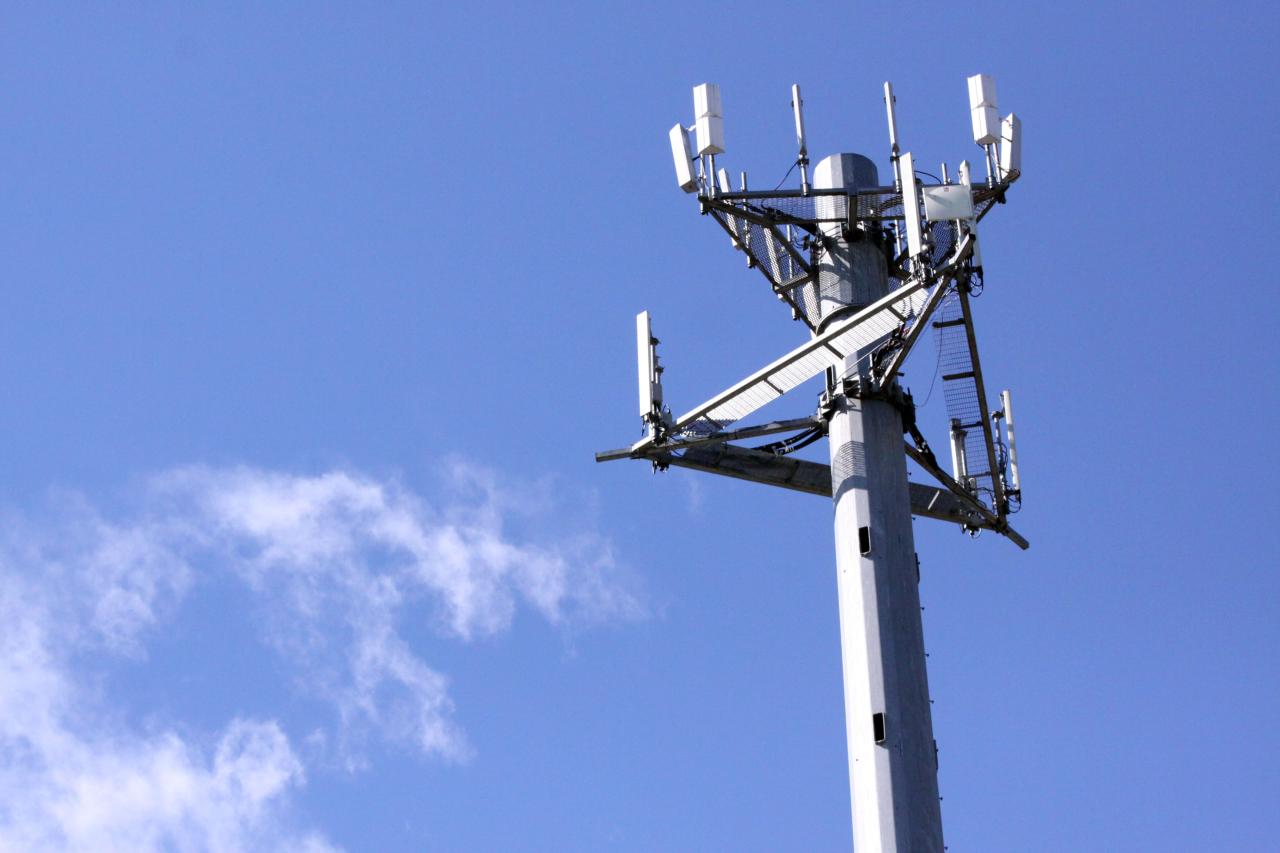
The Canadian Radio-television and Telecommunications Commission (CRTC) today released the second part of its 2015 Communications Monitoring Report. This section of the CRTC’s annual look at Canada’s telecom industry provides an in-depth look at the country’s wireless landscape— a third part that covers the Canada’s broadcasting industry is still to come.
According to the report, smartphone ownership increased a modest 4 percentage points to 66 percent between 2013 and 2014, and some 93 percent of those who own a smartphone are able to access an LTE network with their device. There are now 28.8 million mobile users in Canada, an increase of 1.5 percent from the previous year.
Last year also saw an increase in data usage across the board. According to the report, overall data usage rose by 15 percent, with the average Canadian using about 1GB of data per month.
Per the previously released section of the CRTC’s report, last year 85 percent of Canadian households were subscribed to a wireless phone service compared to the 79 percent of households that have a landline subscription, a dramatic shift from the situation that present only a decade ago.
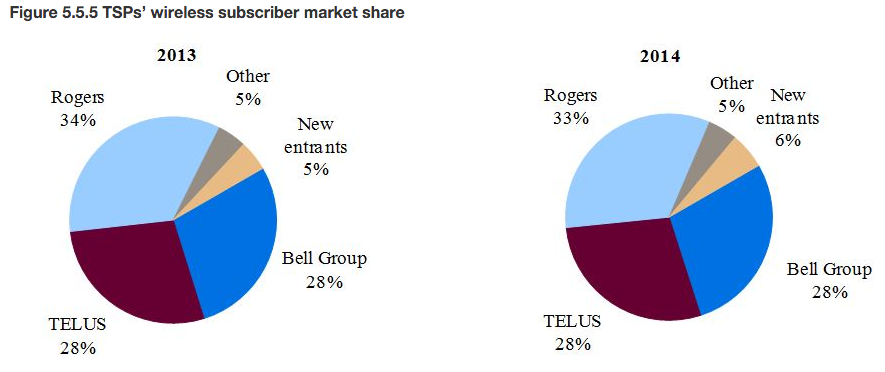
The CRTC notes that Rogers, Bell, Telus, and its sub-brands – such as Fido, Virgin and Koodo – make up 89 percent of the subscriber market share in Canada, which is down one percent from 2013.
New entrant wireless carriers like Wind Mobile, Videotron and Eastlink account for six percent of the subscriber market share. Also slotted into the “new carrier” market share were both Public Mobile and Mobilicity, who have since been acquired by Telus and Rogers at the time the report was conducted. The ‘other’ category includes TSPs such as MTS and SaskTel.
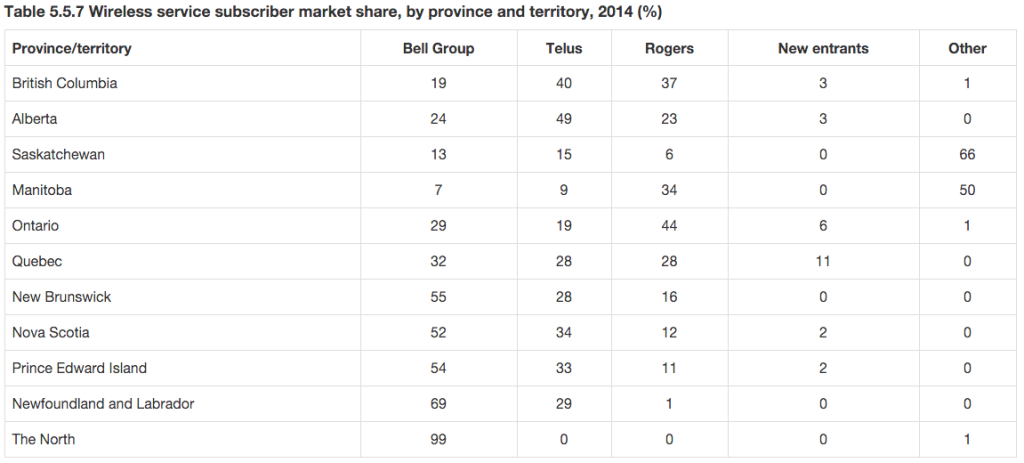
The report also breaks down subscriber market share based on region, with Rogers and Telus dominating Canada’s west, while Bell takes its largest share in the Maritimes. SaskTel appears to have a majority of customers in its home province, while MTS splits the difference with Rogers in Manitoba.

The report claims that LTE penetration is finally reaching the high 90 percent in most parts of Canada. Tiny Prince Edward Island has the highest LTE coverage at 99 percent, followed more impressively by Ontario at 98.2 percent. British Columbia, Quebec, Nova Scotia and Alberta are nearly equal at 93 percent, with the Prairies falling behind at 60 percent for Saskatchewan and 76.6 percent for Manitoba. Canada’s North brings up the rear at 45.9 percent LTE coverage, though at 72.7 percent HSPA coverage it is punching above its penetration rate.

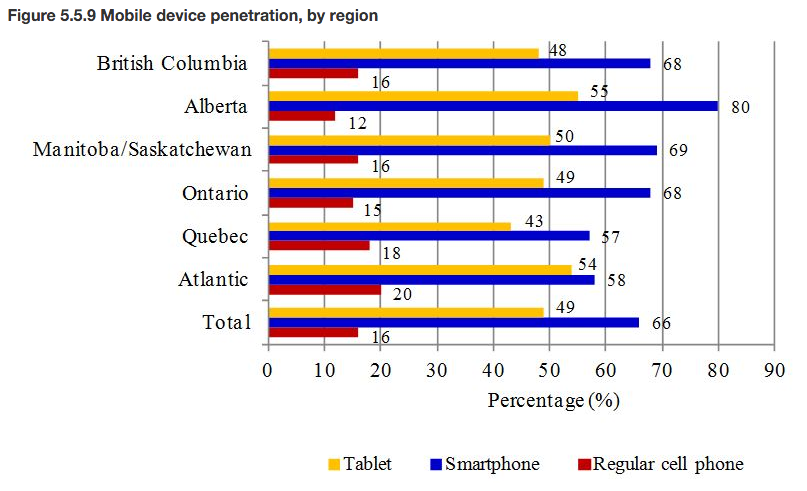
During the same timeframe, the number of Canadians who own a tablet increased by 10 percentage points to 49 percent. This is an contrast to the worldwide market that has seen tablet sales, Apple and Samsung included, decline over the past several quarters.
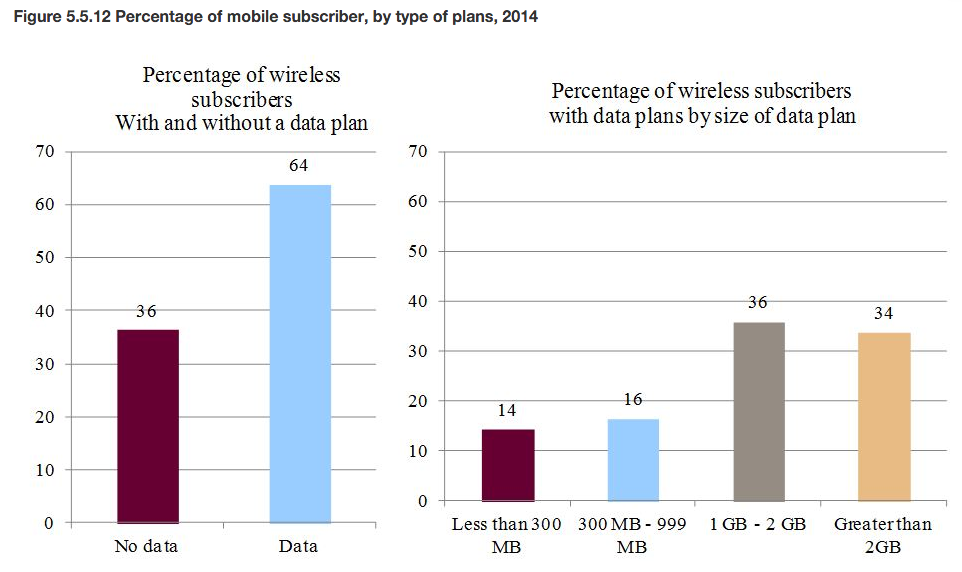
A majority of Canada’s 28.8 million wireless subscribers now have data plans. Just over third of them have plans between 1GB and 2GB, while another third have plans greater than 2GB. It would be nice to see the CRTC break that down even further, since most carriers offer share plans with data pools much higher than that.
Lastly, telecommunications revenues increased by 2.5 percent. As an industry, the country’s telecoms made $45.9-billion in revenue.
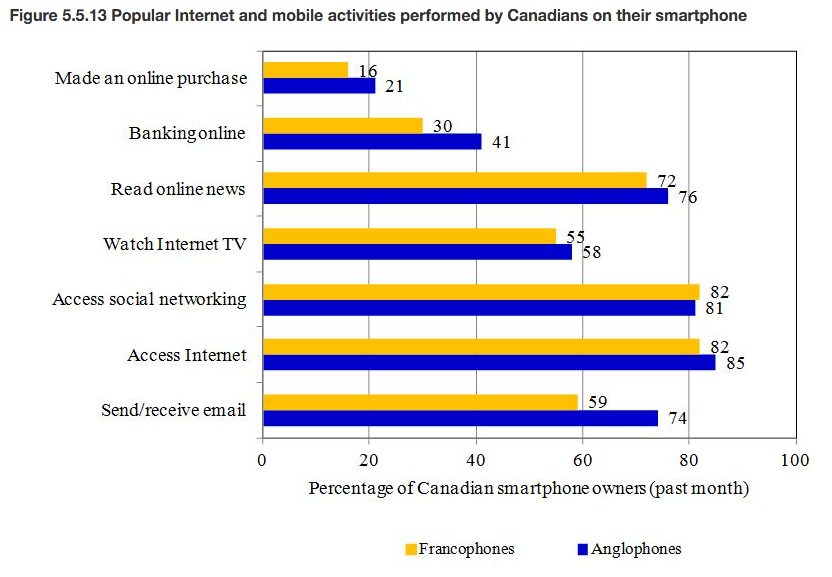
The full telecommunications overview of the 2015 Communications Monitoring Report can be found on the CRTC website.
[source]CRTC[/source]
MobileSyrup may earn a commission from purchases made via our links, which helps fund the journalism we provide free on our website. These links do not influence our editorial content. Support us here.


